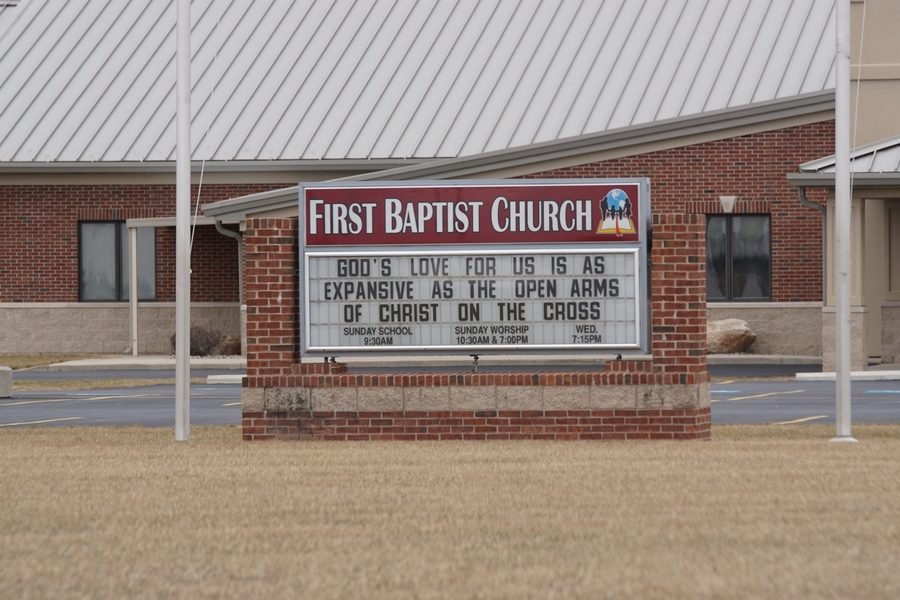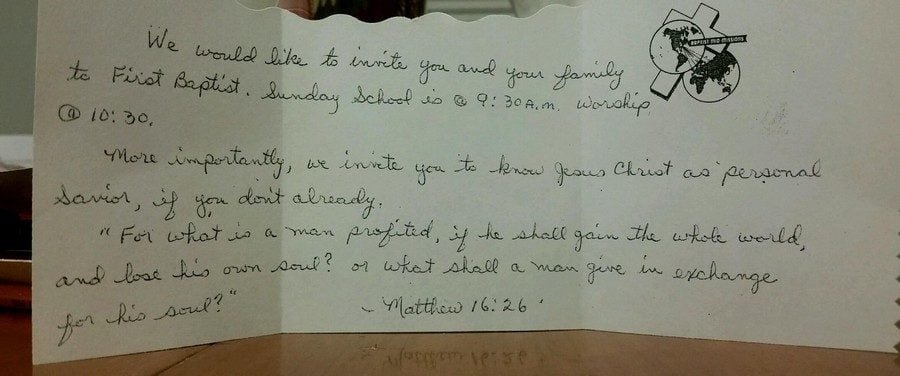
MMy memories of Christian Fundamentalism began in the 1960s as a member of First Baptist Church in Bryan, Ohio. In the early 1960s, my parents moved to San Diego, California. I was five. Dad was chasing the proverbial pot of gold at the end of the rainbow. What he found was more of the same — Ohio, with better weather. Dad ended up selling aluminum awnings and driving a truck — not much different from the jobs he left behind in Bryan, Ohio. Dad’s California dream ended after my second-grade school year with our move back to the rural northwest Ohio community of Bryan — my father’s birthplace. One thing, however, remained: my parent’s newfound Independent Fundamentalist Baptist (IFB) faith.
Mom and Dad were nominal Christians before their move to California. Our family attended Episcopal and Lutheran churches in Bryan. Why my parents sought out an IFB church after we moved to San Diego is unknown. Perhaps someone invited them to church. Or maybe, Dad saw an opportunity for sales referrals. Regardless, the Gerencser family started attending Scott Memorial Baptist Church (now Shadow Mountain Community Church) in El Cajon. While there, Mom and Dad made public professions of saving faith and were baptized by immersion. As a kindergartener, I did the same. From this time until my parents divorced in 1972, the Gerencsers attended IFB churches, and were front and center every time the church doors were open.
One such church was First Baptist Church in Bryan, Ohio. Established in 1954, First Baptist was originally affiliated with the Southern Baptist Convention, but later become an IFB congregation. When my parents returned to Bryan in 1965, the church was located on Alpine Drive, and was pastored by Donald Linz. In 1967, Mom and Dad moved us to Harrod, Ohio, leaving behind the First Baptist congregation. We returned 18 months later. By then the congregation had purchased the old Wesley United Methodist building on the corner of Beech and Butler. Linz had moved on, and in his place was Jack Bennett, a pastor married to the sister (Creta) of two of my uncles. Bennett would pastor First Baptist for thirty-one years. Currently, the church is located on a fifteen-acre plot on the edge of Bryan. Currently, home-grown John MacFarlane is the pastor. MacFarlane has pastored First Baptist since 1999.

After starting ninth grade at Ney Junior High School in 1969, my parents moved away yet again, this time to Deshler. One year later, they would load up their earthly belongings and move to Findlay. Dad started selling vacuuAfter I started ninth grade at Ney Junior High School in 1969, my parents moved our family away yet again, this time to Deshler. One year later, we would load up our earthly belongings and move to Findlay. Dad started selling vacuum cleaners for Kirby. After a brief stay at Calvary Baptist Church, Mom and Dad joined Trinity Baptist Church — a fast-growing IFB church pastored by Gene Milioni. I would remain in Findlay for my ninth through eleventh grade school years.
In the spring of 1974, I returned to my mother’s home in Bryan, Ohio. I once again joined First Baptist, and would remain an active member there until I left college in 1979. With my pregnant wife by my side, I returned to Bryan, but decided that it was time for me to move on from what I called the “family church.”
My sister and her husband attended Montpelier Baptist Church — an IFB congregation affiliated with the General Association of Regular Baptist Churches (GARBC) in nearby Montpelier. The pastor at the time was Jay Stuckey. Stuckey asked me to be his assistant, primarily working with the church’s bus ministry and visitation program. Thus ended my connection with First Baptist.
Several months after my defection from the family church, I ran into Mom Daugherty at the grocery store. Mom, along with her husband Pops, were pillars of the church. I believe they were founding members. Mom Daugherty told me, at the time, “Bruce, why are you attending that ‘other’ church? You know where you belong.” I politely and briefly explained to her why I joined Montpelier Baptist. She would have none of that, telling me that she hoped I would return “home.”
This series will focus on my experiences with First Baptist Church and its pastor Jack Bennett. I’m sure daring to tell these stories out loud will upset some current/former members and pastors of the church. How dare I speak ill of the dead — or the living, for that matter? These stories need to be told, and now is the time.
Bruce Gerencser, 68, lives in rural Northwest Ohio with his wife of 47 years. He and his wife have six grown children and sixteen grandchildren. Bruce pastored Evangelical churches for twenty-five years in Ohio, Texas, and Michigan. Bruce left the ministry in 2005, and in 2008 he left Christianity. Bruce is now a humanist and an atheist.
Your comments are welcome and appreciated. All first-time comments are moderated. Please read the commenting rules before commenting.
You can email Bruce via the Contact Form.

My sons went there with their bus ministry. However, after Jacob challenged their ideas about homosexuality he and Henry stopped going. I guess I still thought the church was Christian and I was too, but in the end no one there made much effort to get to know me. Oh well.
Straight White American Jesus podcast is starting a series on the massive migration of evangelical Christians to Southern California in the 50s and 60s and how SoCal became an evangelical stronghold with such an impact on conservative politics. So it’s no wonder your parents got caught up in that culture.
Hhi. It’s fascinating to read about an element of Socal culture that my own family avoided. We were in the bar business, life revolved around alcohol and the alcoholic lifestyle. Not one word about the Evangelical migration. One thing is sure, and that was the economy from the 50’s to the late 70’s was generating so much wealth, and it seemed to lift all boats, or most of them. No surprise to see they built their power base here. “Mad Men” culture and the Rat Pack was THE culture for us. How ironic the the Conservatoves benefitted so much from the tenets of the New Deal policies of post-World War2, yet once in power by the 80’s, they destroyed that life as I remember it growing up. Now DC is their power base. We never had a clue about them in Old L.A.